Studio Mumbai
Post By:Kitticoon Poopong
Studio Mumbai names two louvered boxes Palmyra house after a popular Indian tree

Photo courtesy Studio Mumbai
The Palmyra House is set in a working coconut plantation. So as not to disturb the land, much of the house was built by hand by the architect's longstanding team of carpenters.
It is said that the Palmyra tree can be used in 800 different ways. Its leaves make fine hats, thatching, umbrellas, mats, and baskets; its fruits and their sap, popularly called toddy, are a local delicacy. Architect Bijoy Jain, however, is perhaps the only person who has named a house after it. He designed the Palmyra House with signature louvers made from the tree’s cut, dried, and locally harvested wood, setting a course of using sustainable, regional materials to guide the project. 
Photo courtesy Studio Mumbai
Divided into two volumes, the house forces its inhabitants to be engaged with nature.
Located in the Alibaug area of India where this hardy species grows in abundance, the house evokes an amalgam of vernacular architecture and contemporary design. Jain relied on his intuition to guide his process. “There is a constant struggle to understand the sense of that intuition and finding a method within myself to be as honest to it as possible. In this case, it was about a light, air-filled volume,” he says. 
Photo courtesy Studio Mumbai
In the end, the architect built not just one volume, but two louvered wooden boxes in a functioning coconut plantation in Nandgaon, a quiet, sun-drenched land of palm trees where time seems to stand still and the natives go about their daily chores as they did ages ago. However, given that India’s restless financial capital, Mumbai, sits just an hour across nearby Mandwa Bay, the area has long been favored by wealthy Mumbaikars seeking weekend homes and a place to relax. Not surprisingly, the region is dotted with exciting new architecture commissioned by some of India’s richest clients. Palmyra House serves as a vacation home for a Mumbai-based entrepreneur and his family. 
Photo courtesy Studio Mumbai
Palmyra, a very popular local palm tree, was dried and cut to make the house's ubiquitous louvers that let in air and light. Accessed by foot, roughly 165 feet from the road, the house’s two rectangles encompass 3,000 square feet and are anchored to a stone plinth. A 25-foot-wide open court separates the buildings, with a pool that alludes to the plantation’s 80-year-old system of stone aqueducts. The house offers dramatic views of the Indian Ocean and was situated to disturb as little as possible the densely planted palms on the 1-acre

Photo courtesy Studio Mumbai
The dining area faces the pool sitting in the middle of the 25- foot-wide court and the living room beyond.

Photo courtesy Studio Mumbai
The northern volume features a master bedroom overlooking a living area. Gray-green Indian patent-stone flooring (hand-finished, pigmented cement plaster) echoes the tone that coconut bark attains during the monsoon season. 
Photo courtesy Studio Mumbai
The master bedroom features an open-to-the-sky copper shower enclosure with a small window offering a peek at the ocean.

Photo courtesy Studio Mumbai
The stairs, like much of the house's interior, are made from ain wood, another local species. 
Photo courtesy Studio Mumbai
The master bedroom.

Photo courtesy Studio Mumbai
The study is one of the house's many spaces that open entirely to the outdoors. 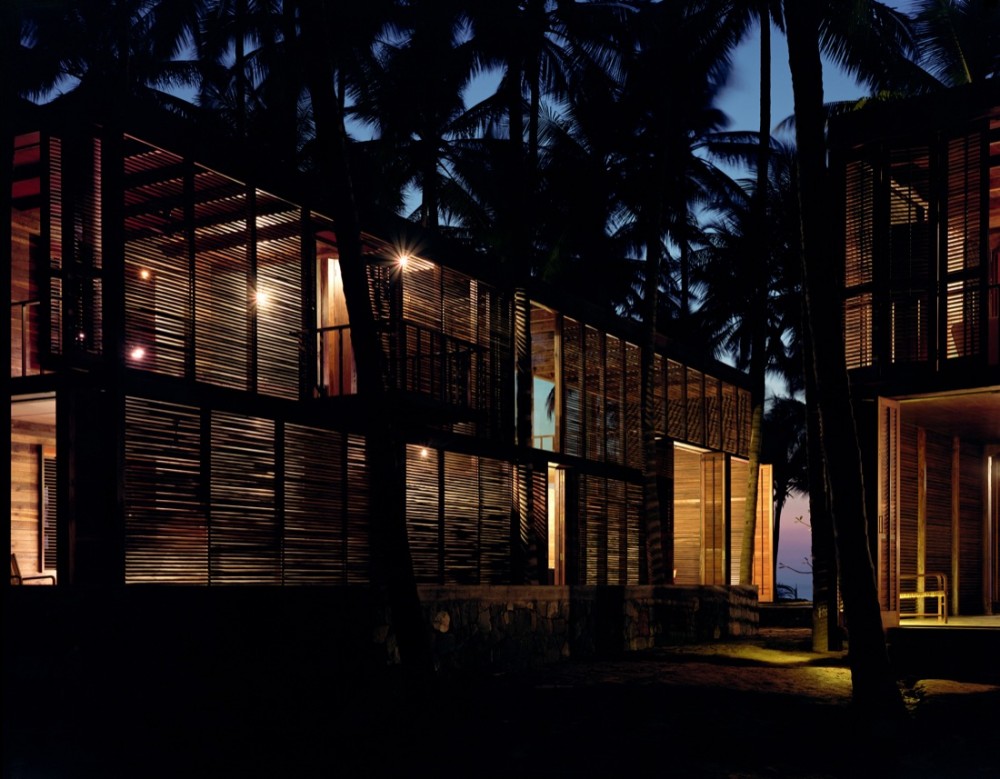
© Helene Binet
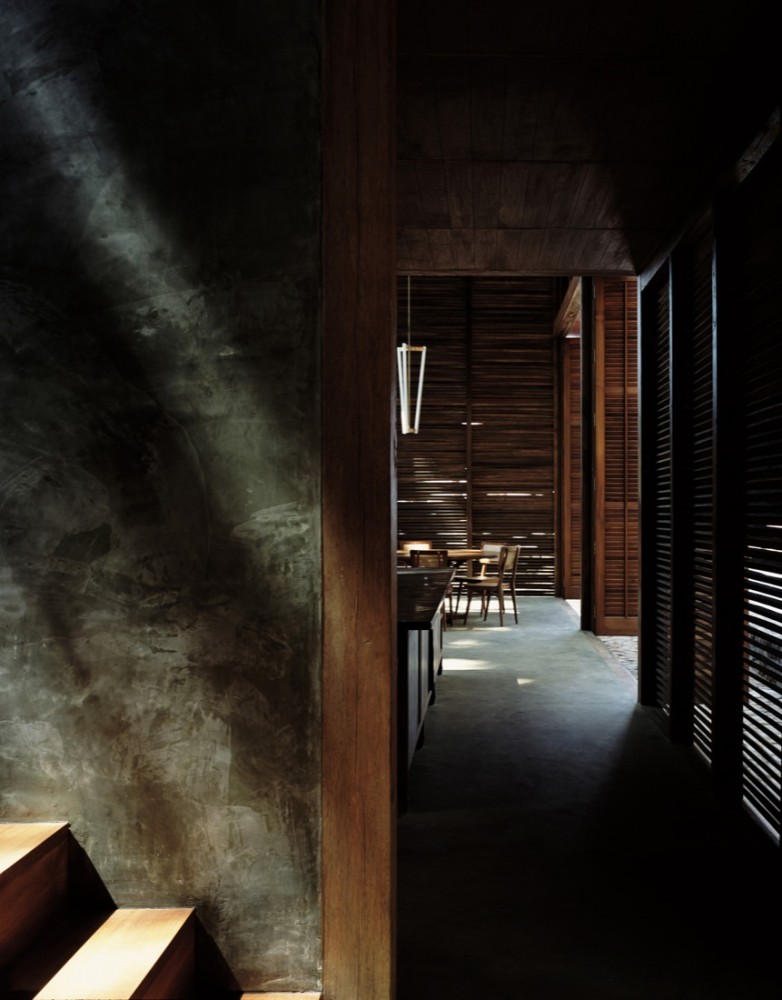
© Helene Binet
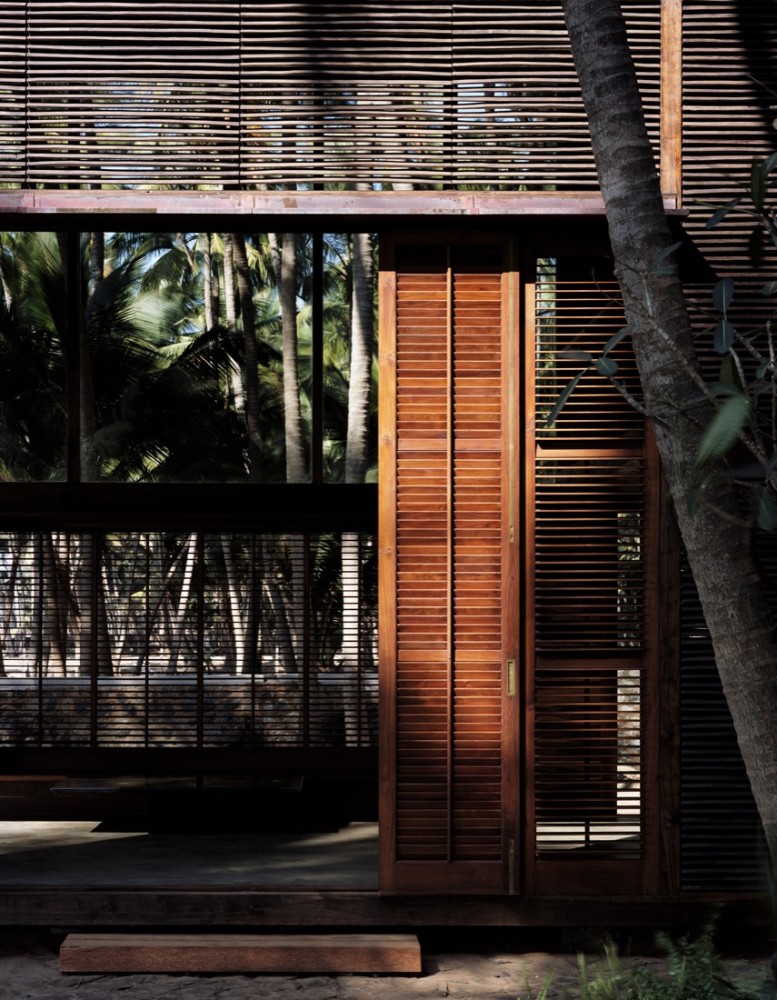
© Helene Binet
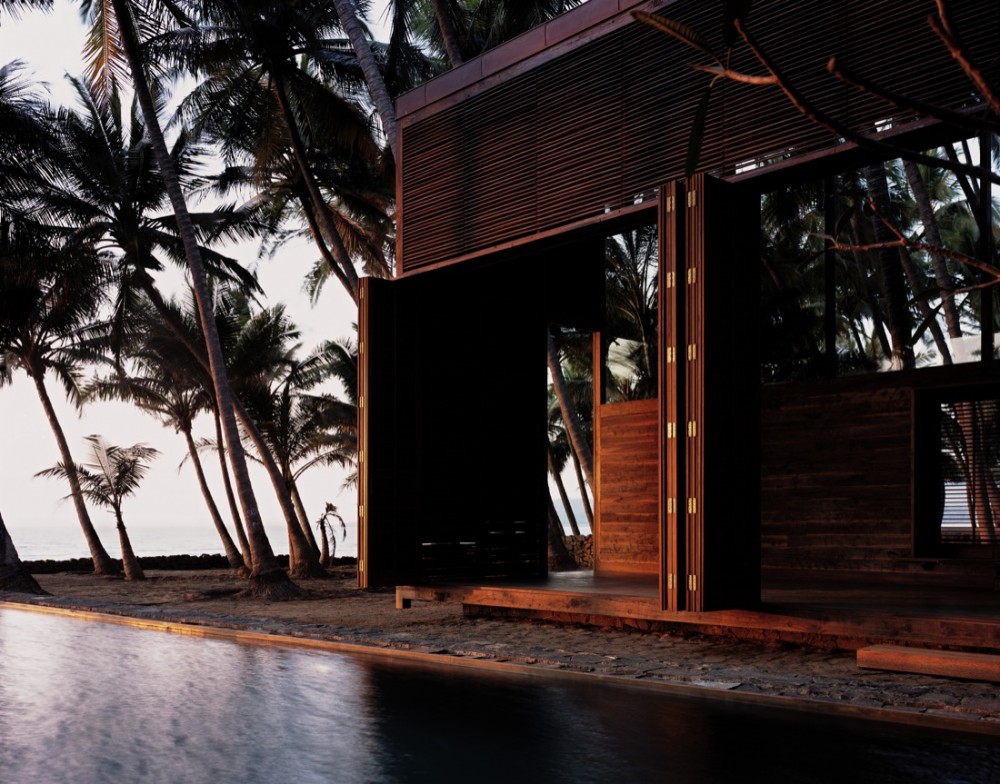
© Helene Binet
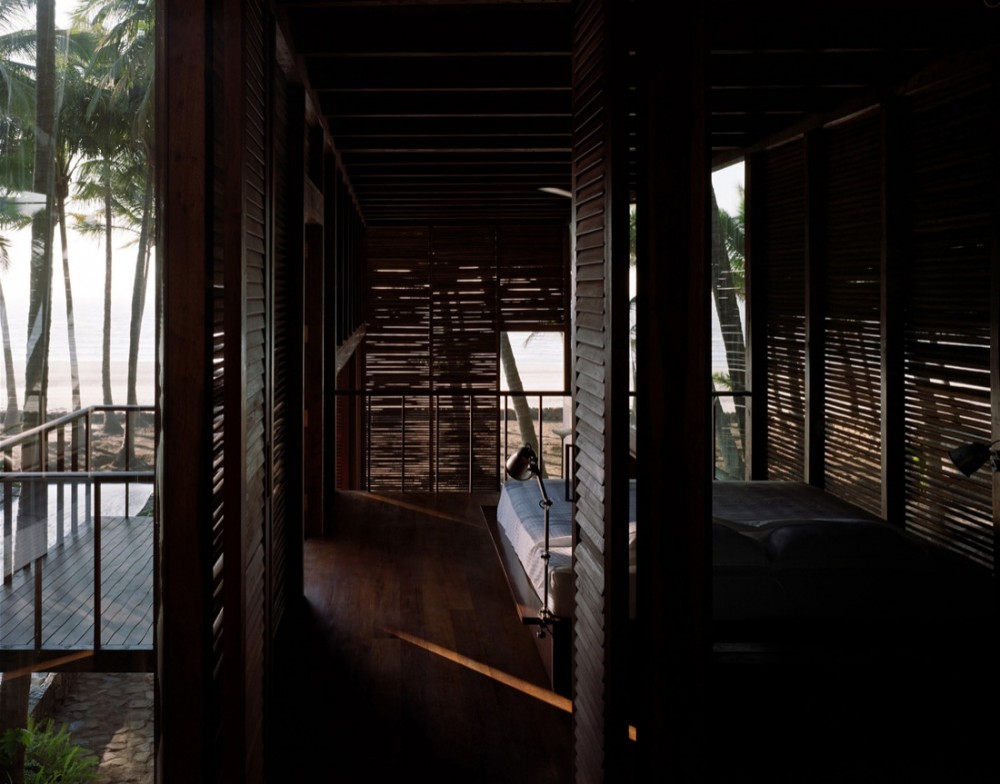
© Helene Binet
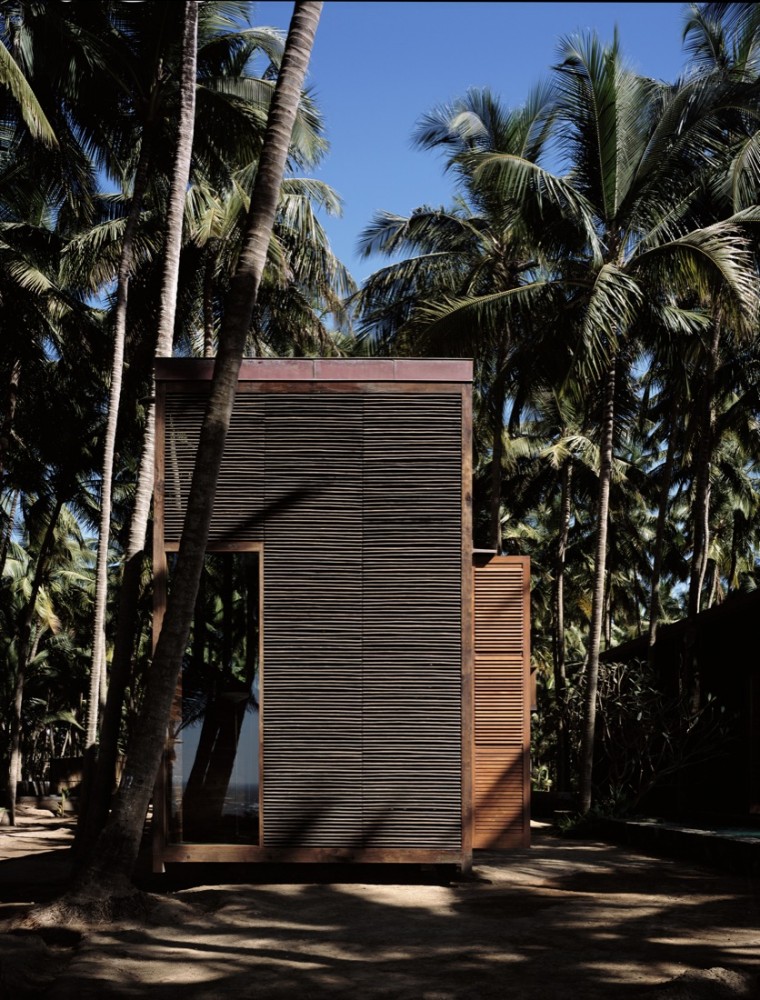
© Helene Binet
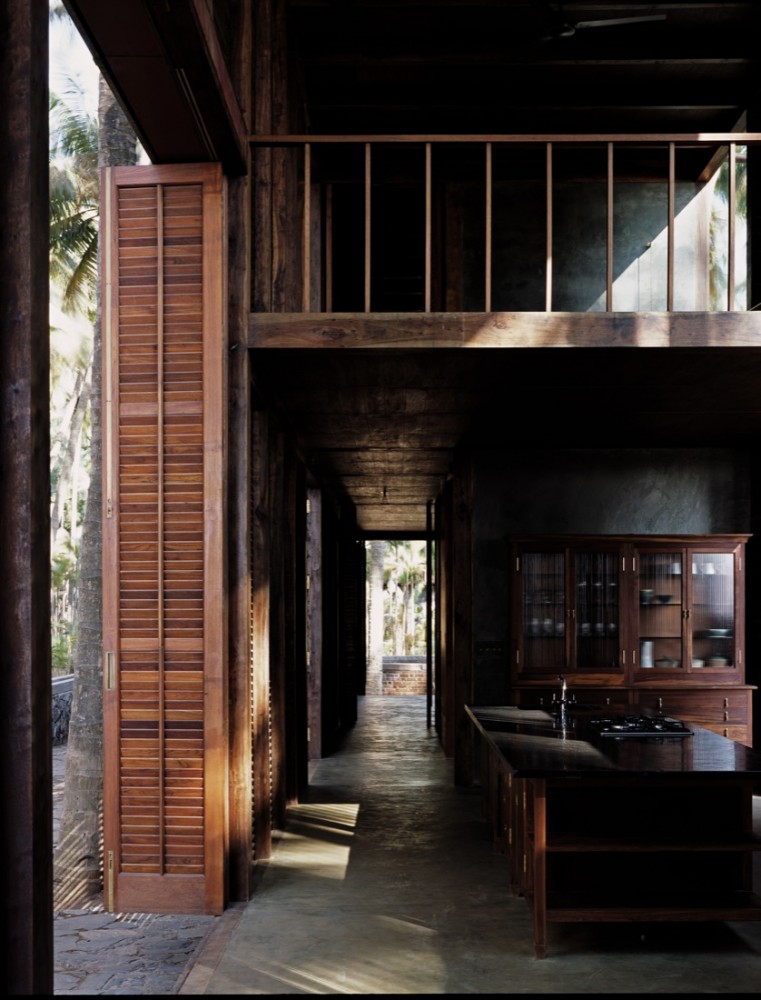
© Helene Binet
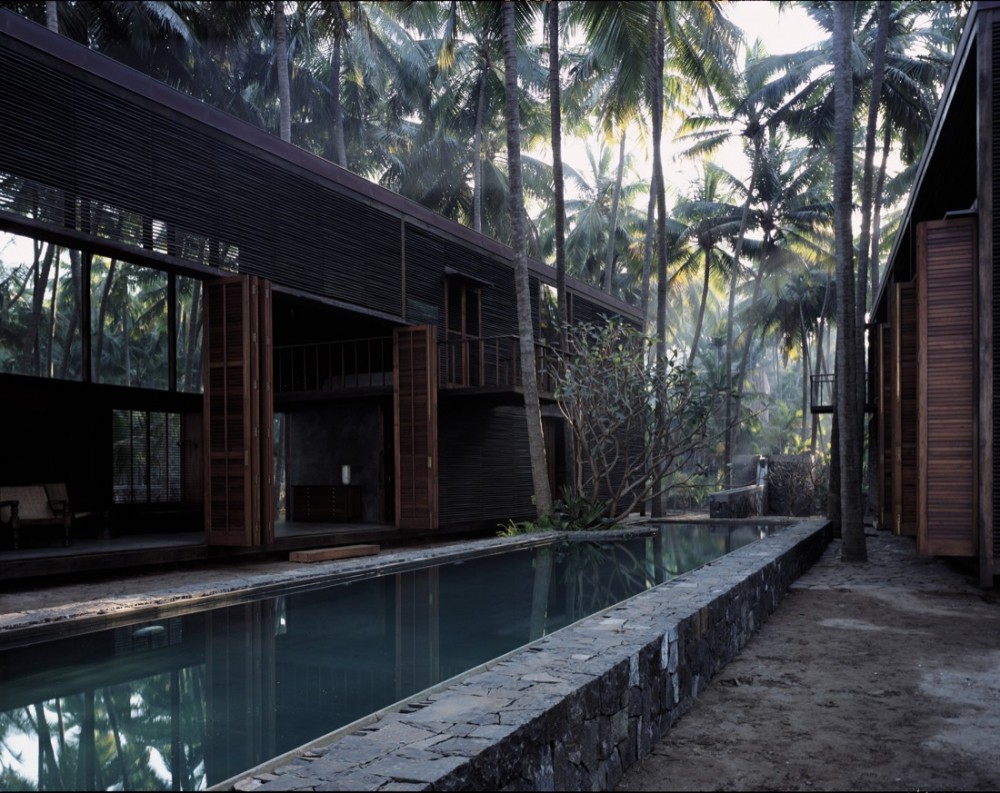
© Helene Binet
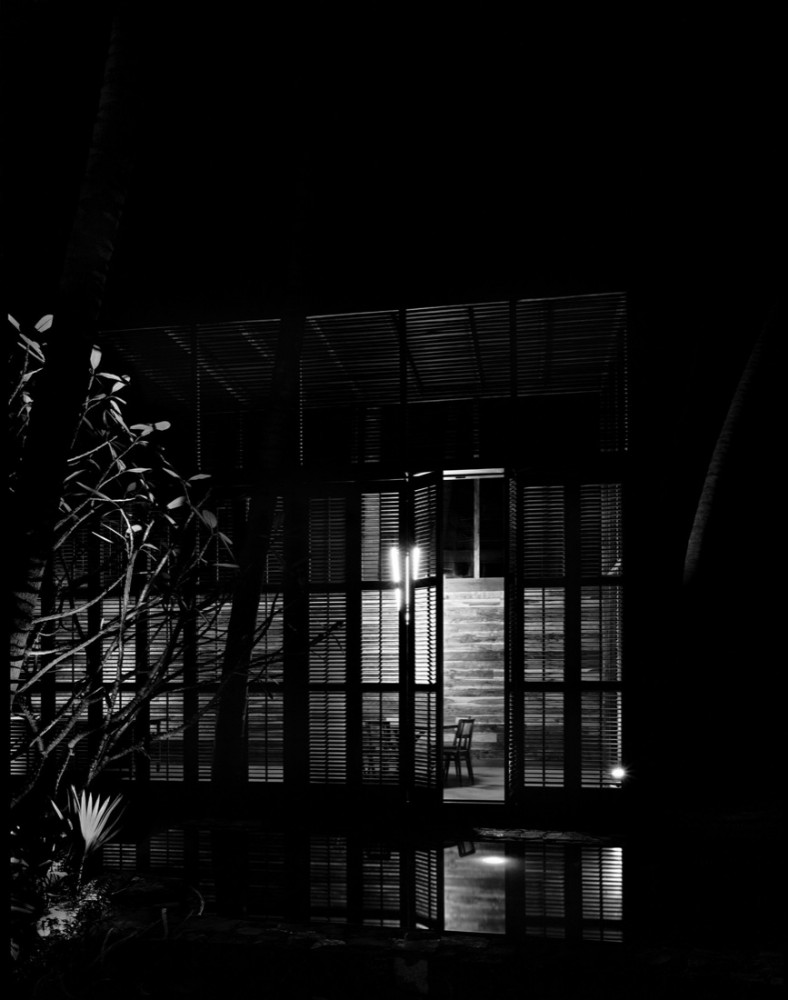
© Helene Binet
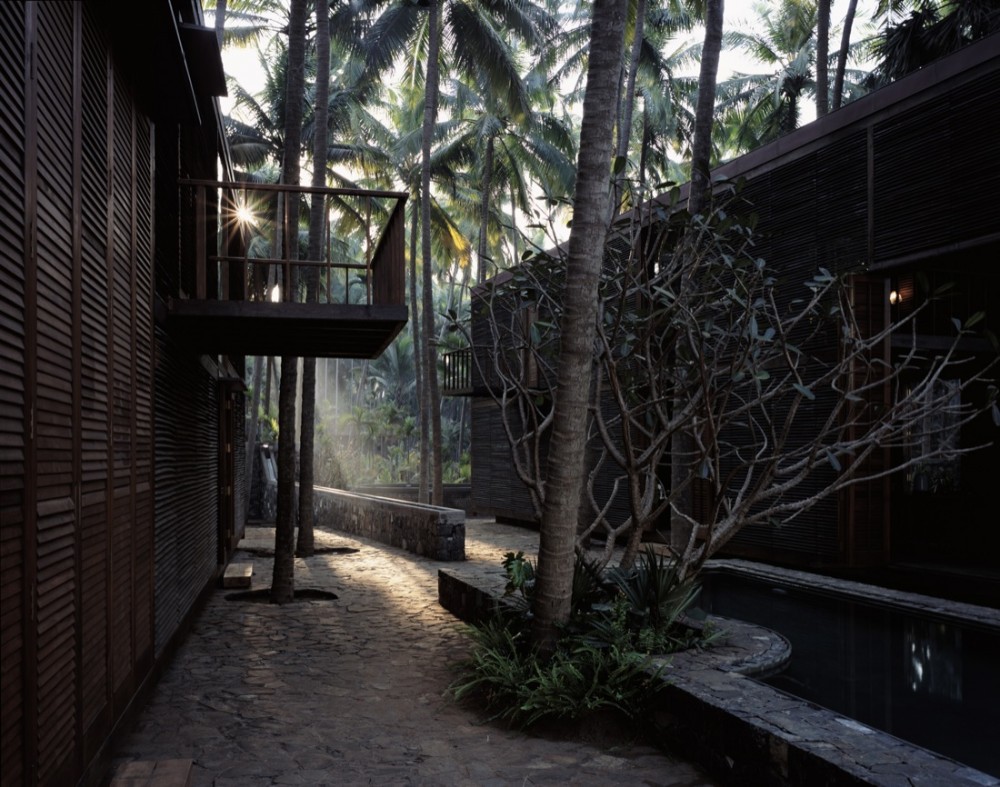
© Helene Binet
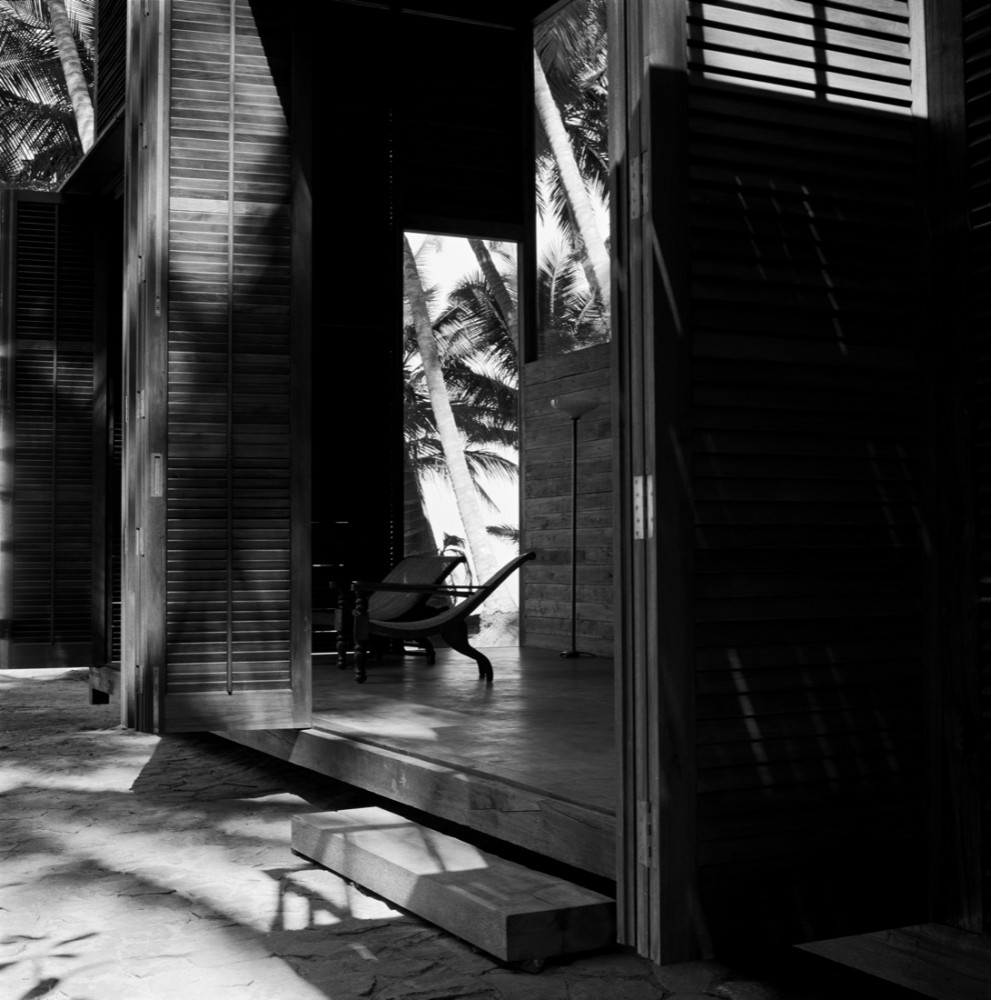
© Helene Binet
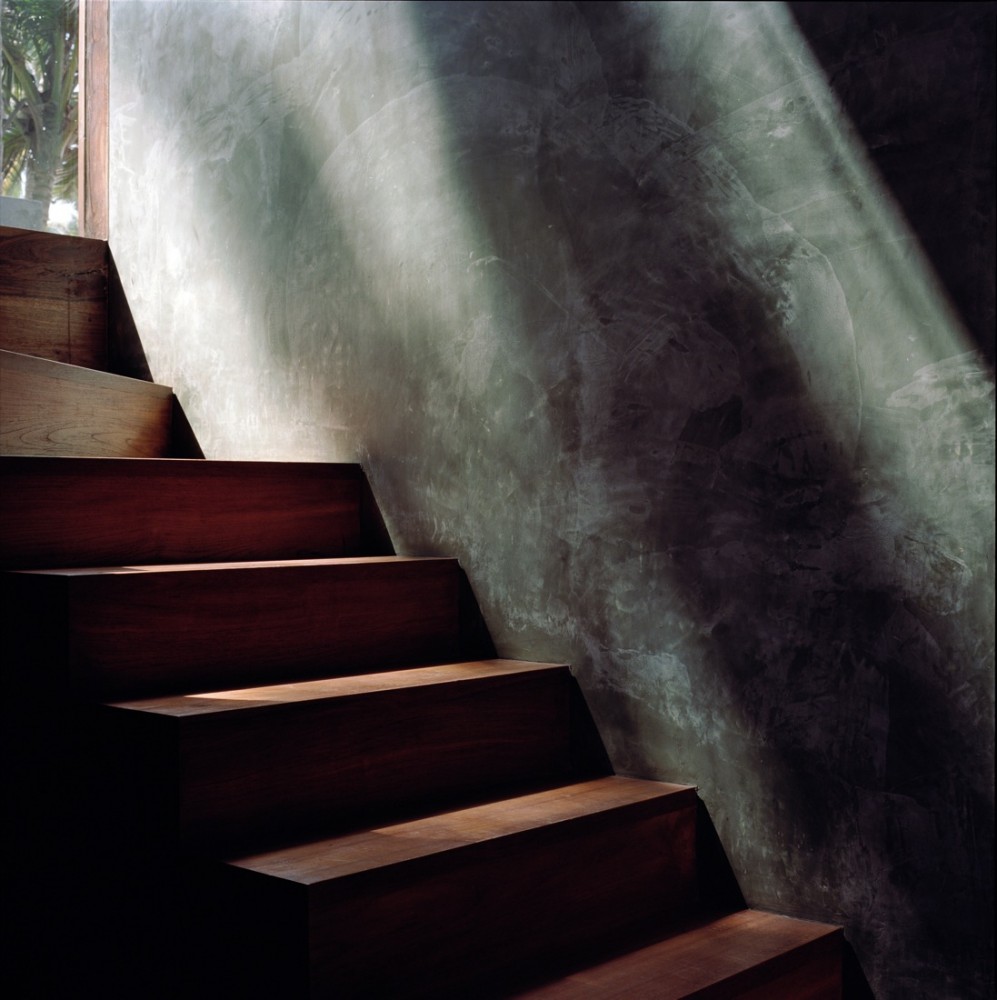
© Helene Binet
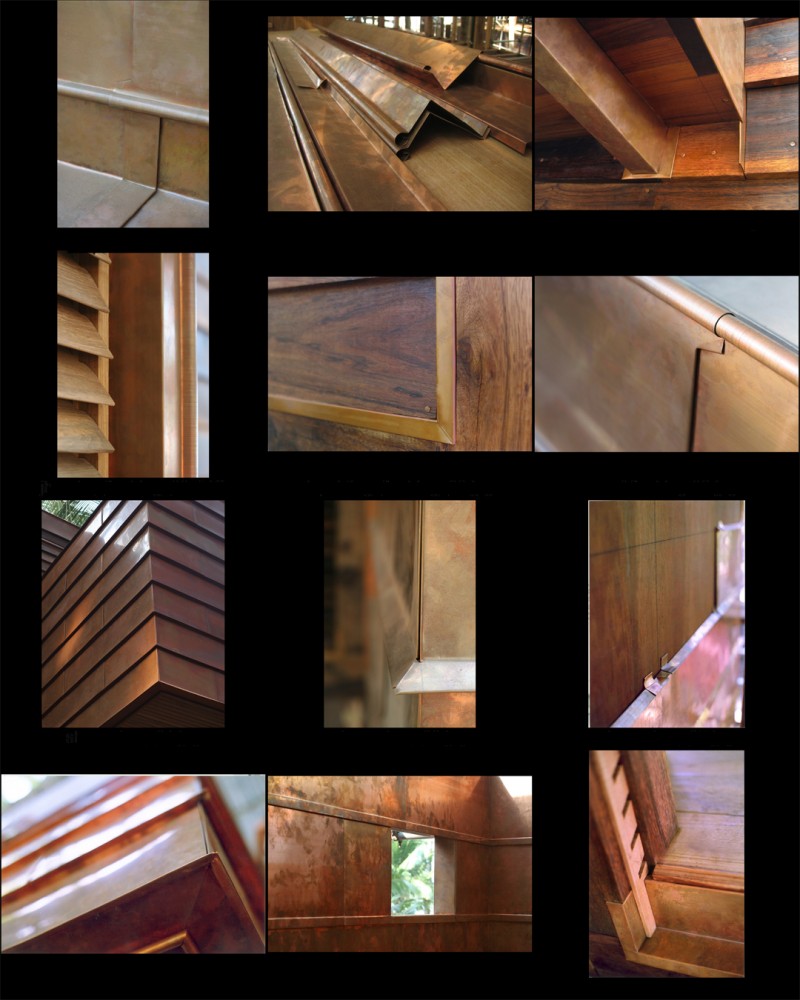
© Courtesy of Studio Mumbai
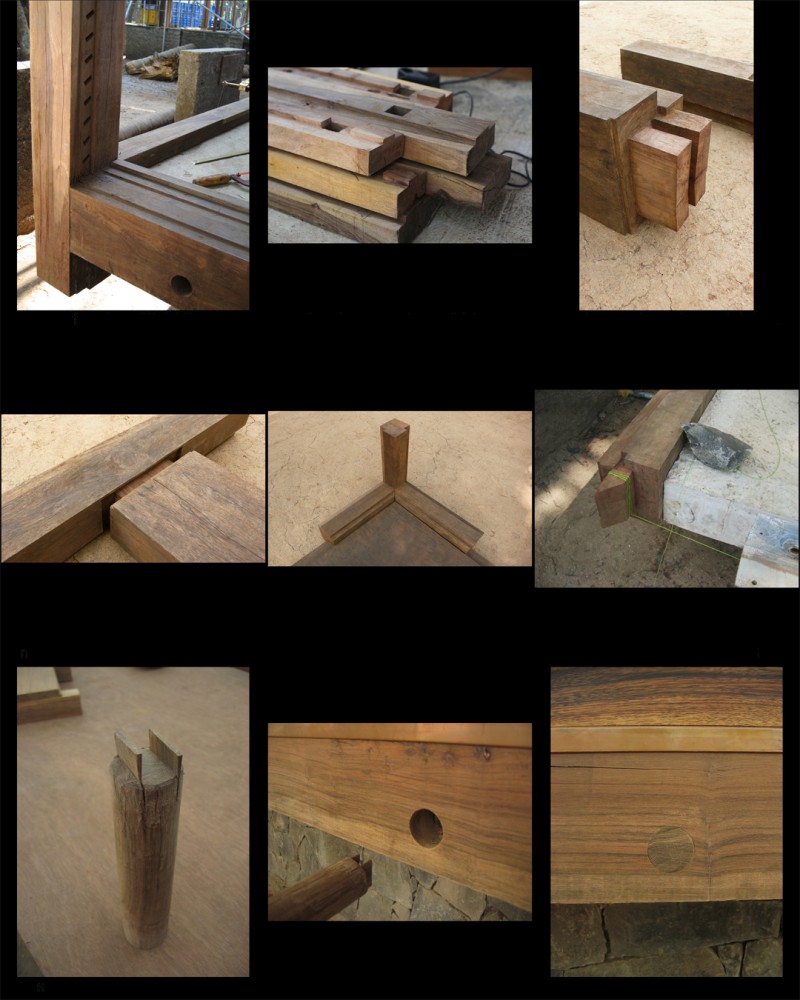
© Courtesy of Studio Mumbai
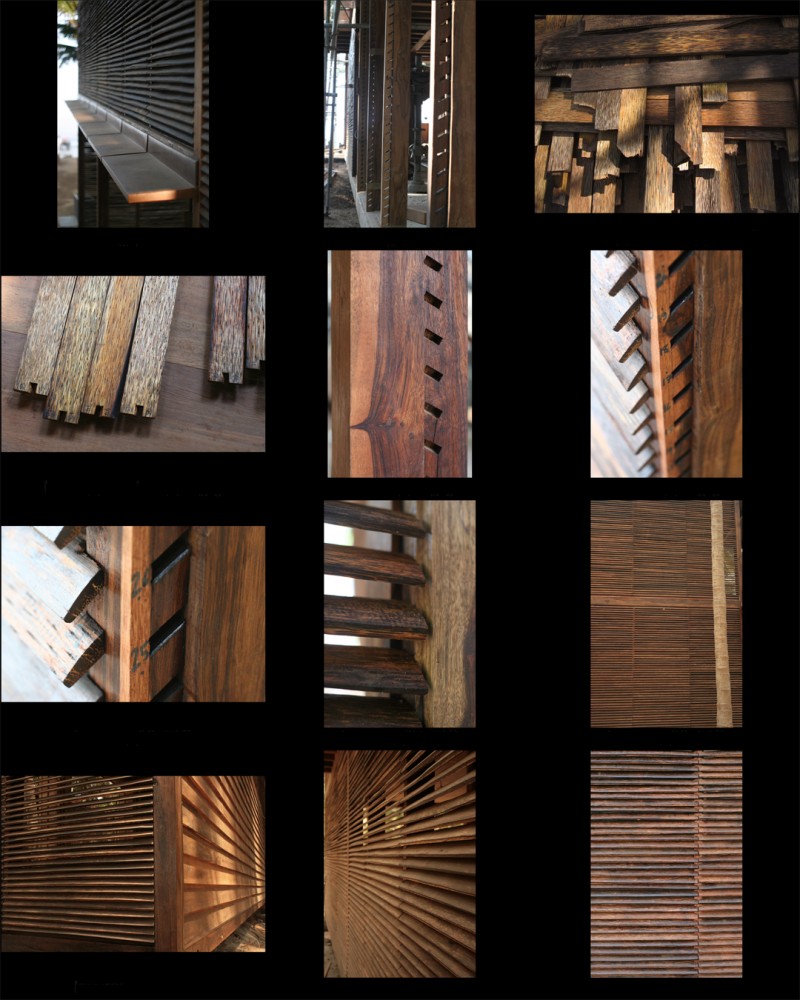
© Courtesy of Studio Mumbai

Image courtesy Studio Mumbai
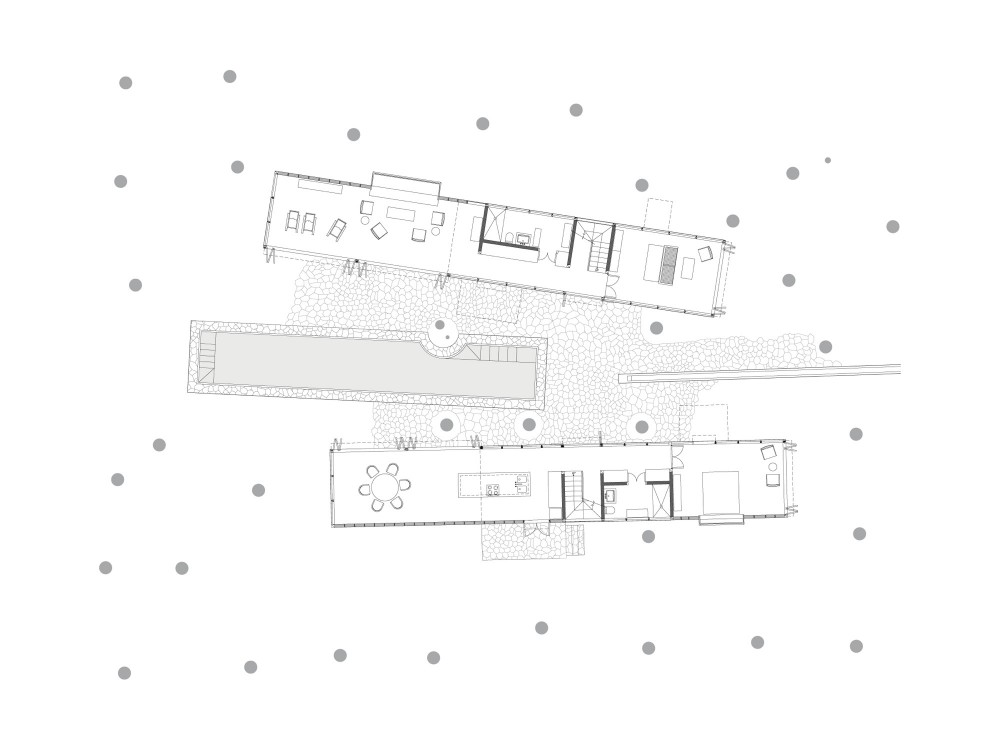
ground floor plan
 site section
site section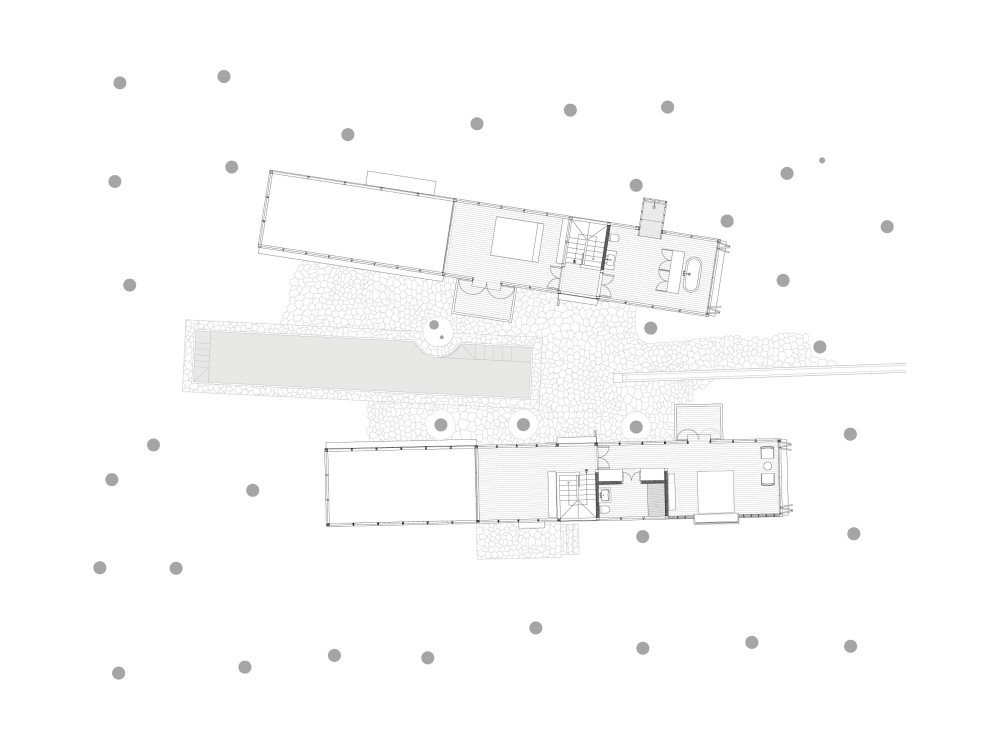 first floor plan
first floor plan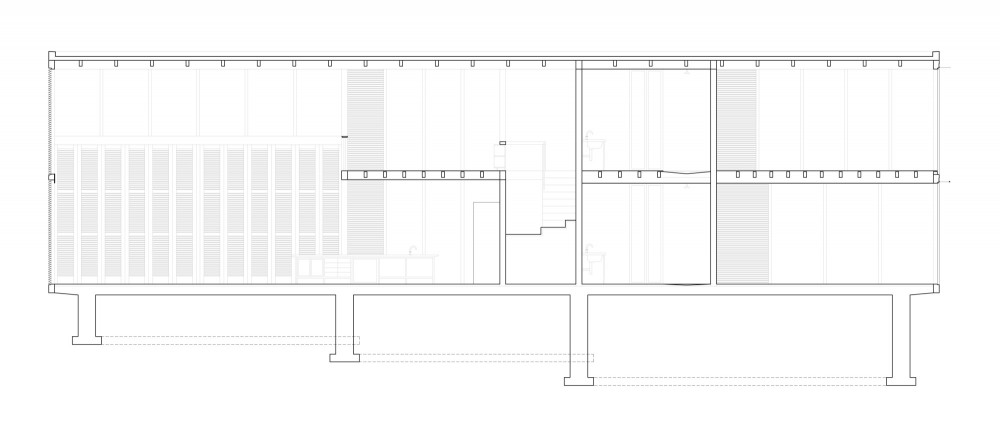 section
section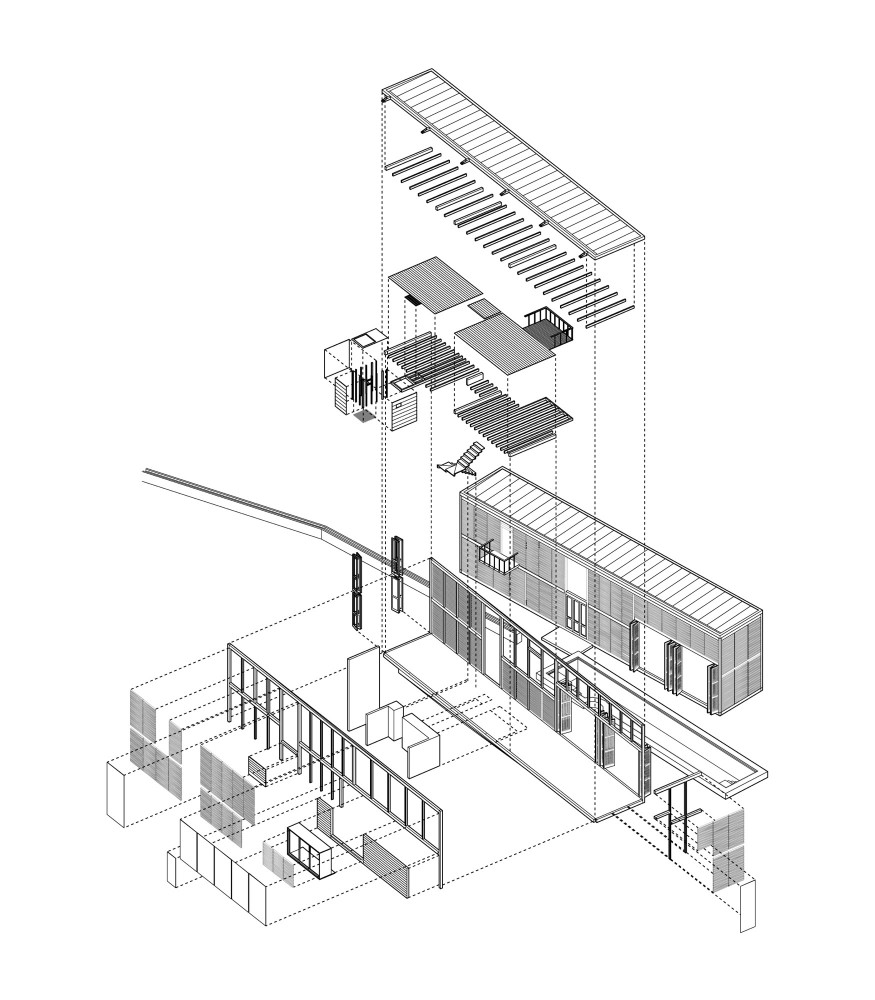
exploded axo
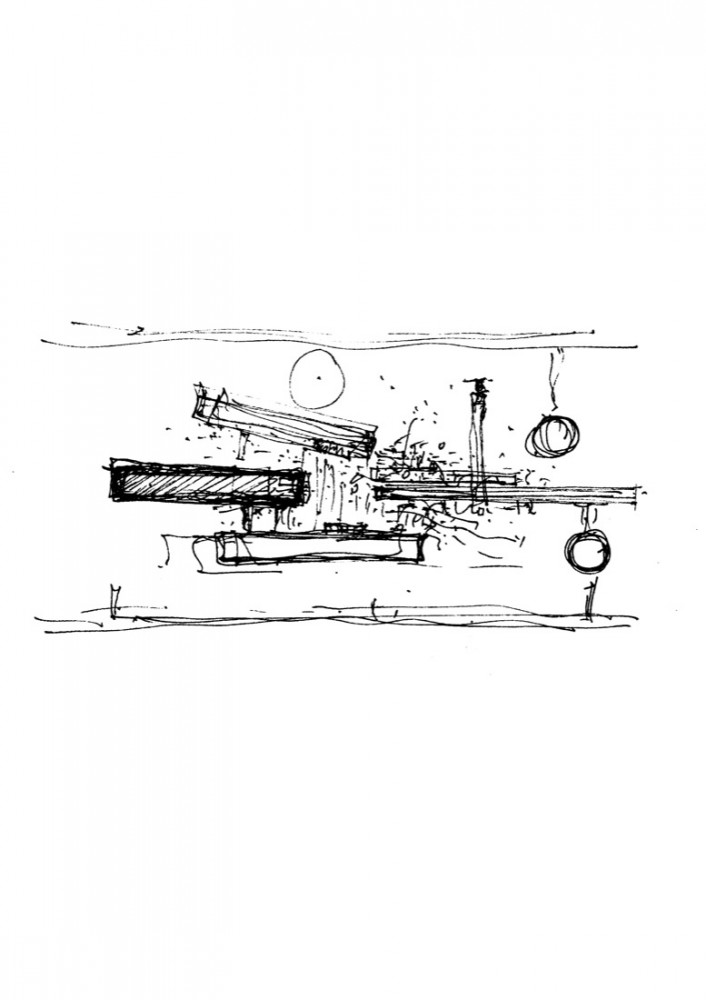
sketch 01
 sketch 02
sketch 02the PeopleArchitectStudio Mumbai Architects 556 N.M. Joshi Marg Byculla West Mumbai 400 011 INDIA Tel: +91 22 65 777 560 Fax: +91 22 23 012 973 Principal Architect: Bijoy Jain Project Team: Jeevaram Suthar, Mangesh Mhatre, Roy Katz, Samuel Barclay, Faheem Khan, Mohammed Nizam, Punaram Suthar, Jean Marc Moreno Interior designer: Studio Mumbai Architects Consultant(s) Landscape: Studio Mumbai Architects Lighting: Studio Mumbai Architects General contractor: Studio Mumbai Architects Photographer(s) Samuel Barclay Tanya Fleisher Geoffrey Johnston Ben Lepley Roy Katz Prabuddha Das Gupta CAD system, project management, or other software used: AutoCAD 2006 | the ProductsRoofingMetal: Jean Marc Moren |

